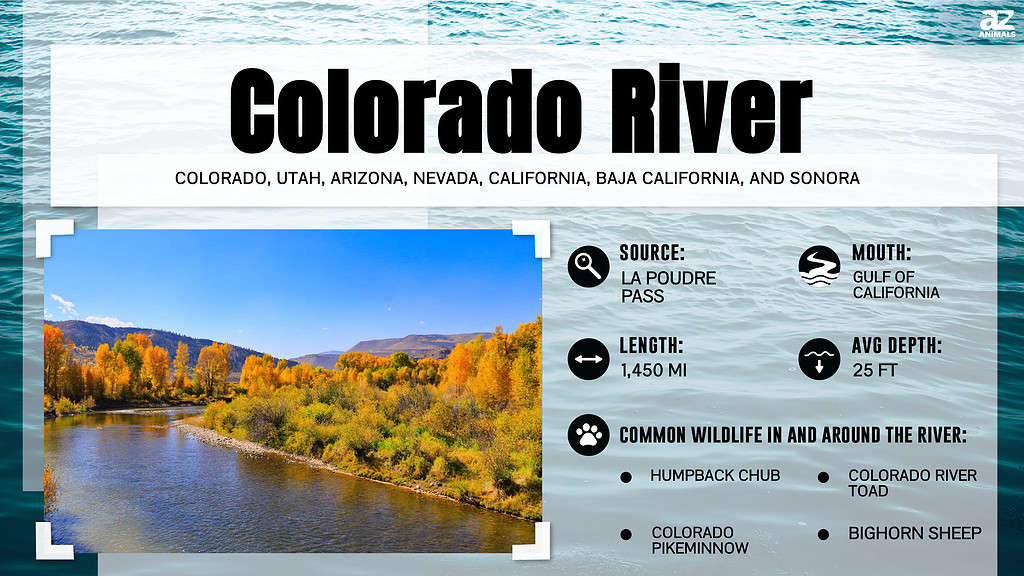
For almost all of human history, we have relied on rivers for many different things. From travel to food to new technological uses, rivers have always provided humans with the resources needed to survive – and the Colorado River is no exception. While we may not need it for travel anymore, keep reading to learn just what states rely on the Colorado River and why.
Ready to learn more? Let’s dive in!
About the Colorado River
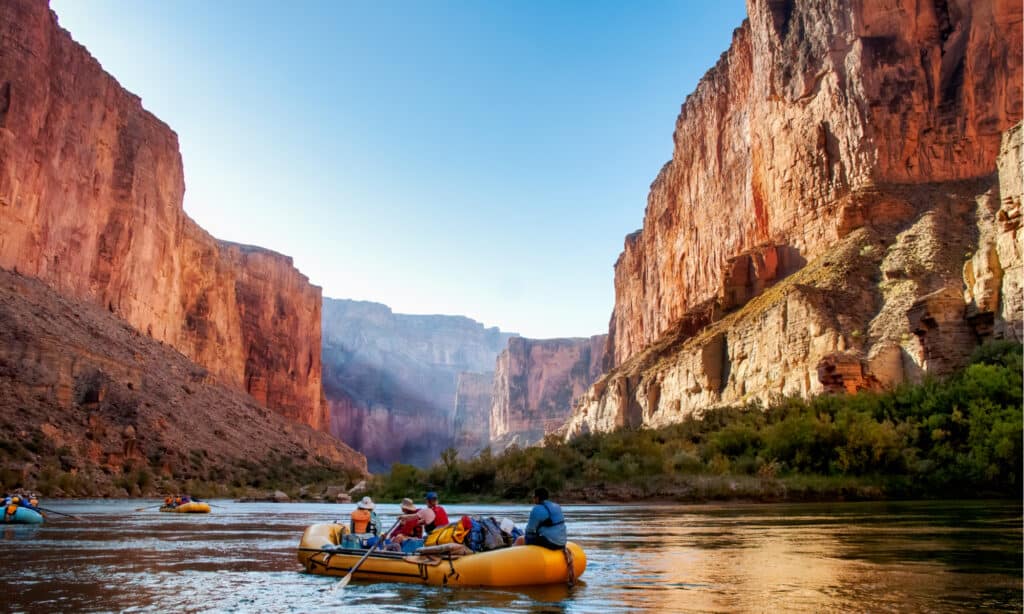
The Colorado River is a popular outdoor recreational site in the southwest.
©Jim Mallouk/Shutterstock.com
The Colorado River is the sixth-largest river in the country. At 1,450 miles long, it stretches across the southwestern United States before passing into Mexico and meeting the Gulf of California. It crosses seven states in the United States and is home to four distinct indigenous tribes: the Mohave, Chemehuevi, Hopi, and Navajo.
The Colorado River is more than just an impressive natural feat, however – it’s an essential part of life in the West. In fact, more than 40 million people rely on the Colorado River for various reasons.
What is the Colorado River Used For?

Lake Mead is one of the many reservoirs dotting the Colorado River.
©iStock.com/Sean Pavone
There are three main uses for the Colorado River: crop irrigation, usable water, and electricity.
If you’re familiar with the southwestern region of the United States, then you may know that rain is a rare sight. In fact, from the end of July 2020 to the beginning of July 2021, some areas of California only received 5 inches of rain. As a result, it’s important to find outside sources for keeping our crops growing. The Colorado River provides a source of clean water that can be diverted away from the main river and used for crops.
States also rely on the Colorado River for usable water. This includes drinking water as well as the water needed for showers, sinks, and even toilets. Not only does it provide drinking water to seven states, which we will discuss below, but also to Mexico and 29 indigenous reservations.
Lastly, and maybe most surprisingly, the Colorado River also provides the West with electricity.
Outside of needs, however, the Colorado River is also used for recreation. Whitewater rafting is one of the most popular activities for those looking to visit the Colorado River, but other water sports such as boating are also common.
States that Rely on the Colorado River
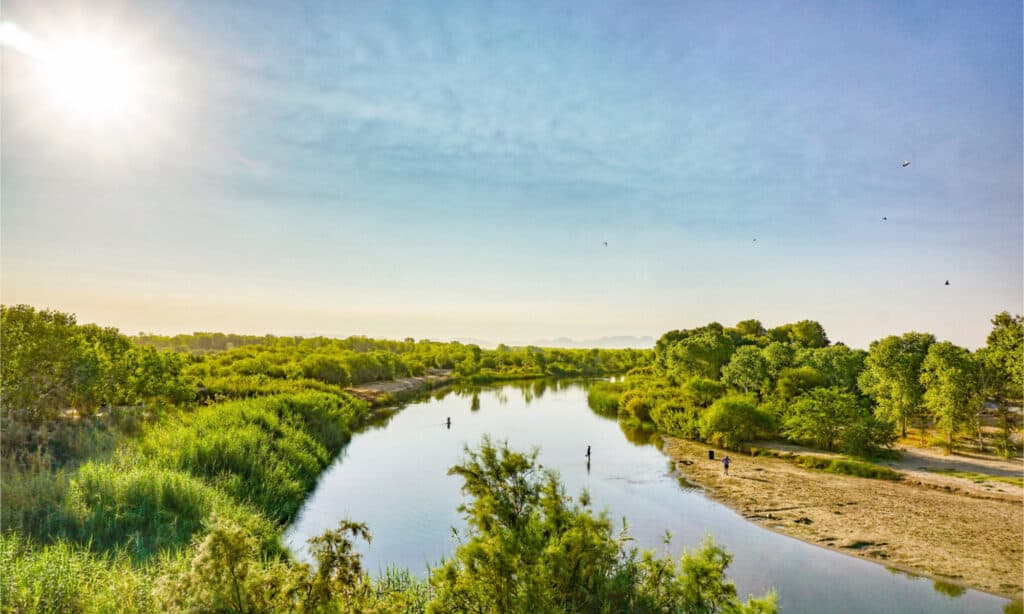
Seven states rely on the Colorado River.
©Enrique Alcala/Shutterstock.com
There are seven states that rely on the Colorado River for various uses. This includes the human needs for the river, such as drinking water and power, as well as the native wildlife’s needs. The seven states that rely on the Colorado River include:
- Arizona
- California
- Colorado
- Nevada
- New Mexico
- Utah
- Wyoming.
Notable Dams on the Colorado River
In order for these states to rely on the Colorado River, development has been necessary. One of the most common ways to develop a river for human use in today’s age is through the use of dams. Dams are used to control how much water is where. They allow humans to store water in lakes known as reservoirs. This water can be used when needed to generate electricity or even for drinking water.
The Colorado River is considered one of the most developed rivers in the entire world. In fact, you can find fifteen dams on just the main river. When you think about the tributaries off of the main river, there are hundreds of dams. Out of the fifteen main dams on the Colorado River, here are three of some of the most notable.
Hoover Dam
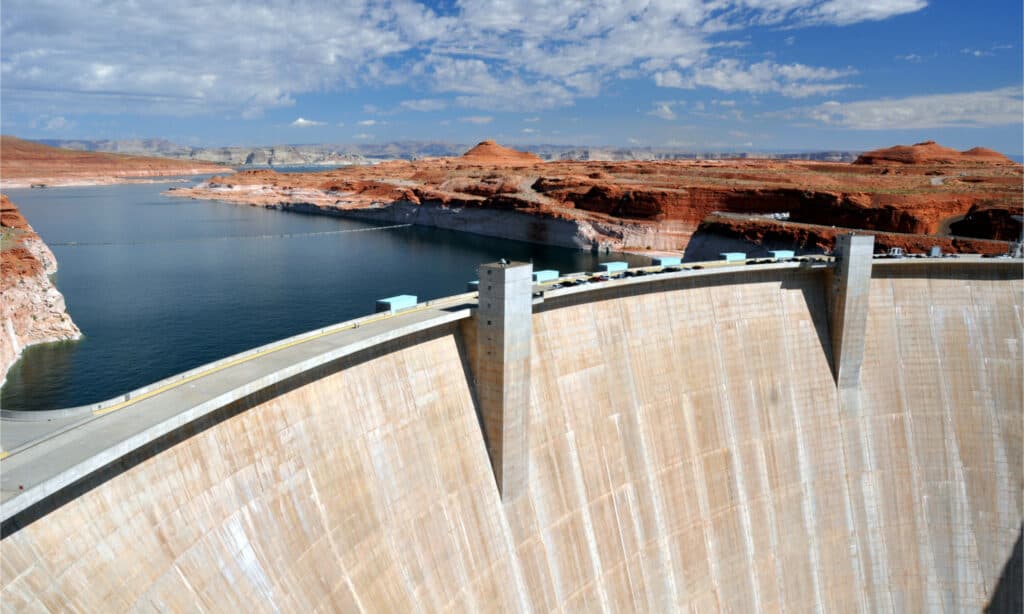
The Hoover Dam is the largest on the Colorado River – and in the United States!
©Matej Hudovernik/Shutterstock.com
The Hoover Dam is probably one of the most notable dams in the United States. Its construction began in 1931 and took around five years to finish. You can find it in the Black Canyon region of the Colorado River, right on the border between Arizona and Nevada.
This dam in the Colorado River is over 726 feet tall and around 1,244 feet long. Back in 1931, it cost around $49 million to build. That’s almost $700 million as of 2020! The Hoover Dam is one of the main sources of water, flood control, and electricity in the southwestern United States.
When a dam is built, it causes water to pool in a location known as a reservoir. The Hoover Dam creates Lake Mead. When it comes to water capacity – that is, how much water it can hold – Lake Mead is the largest reservoir in the United States. It is 112 miles long and can reach depths of 532 feet. As of 2022, Lake Mead has reached extremely low levels as a result of droughts in the region.
Glen Canyon Dam
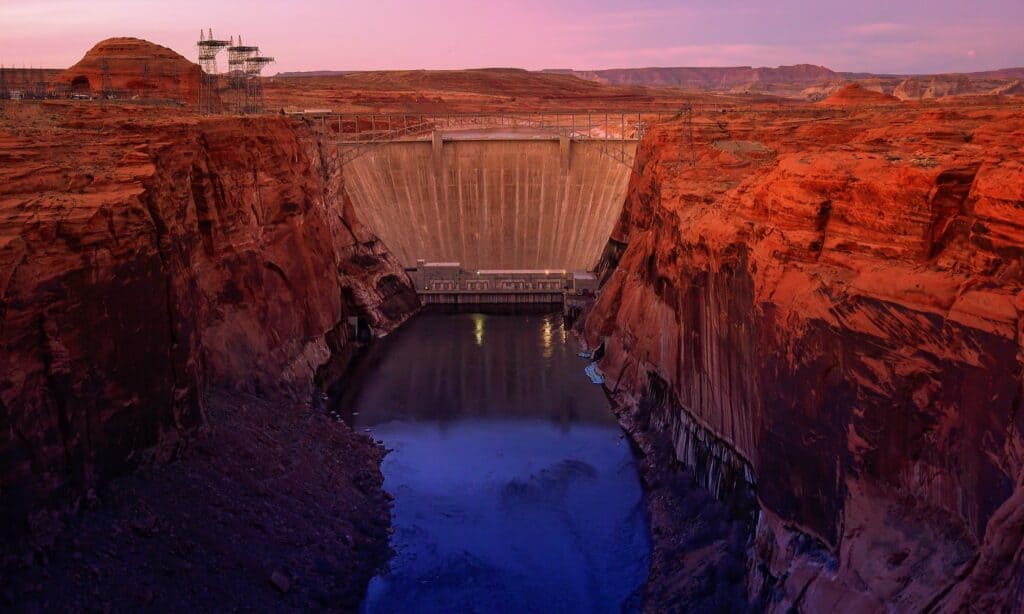
The Glen Canyon Dam creates Lake Powell.
©iStock.com/CrackerClips
At 710 feet, the Glen Canyon Dam is the second-largest dam in all of the United States, right behind the Hoover dam. Construction began in 1956, but researchers had been considering the location since 1924.
When Glen Canyon Dam was built, it created Lake Powell, another well-known reservoir. Although it is a major vacation destination, it has been criticized by many environmental writers because of its impact on the environment. Lake Powell is the second-largest reservoir, behind Lake Mead, and can reach depths of 583 feet.
Imperial Dam
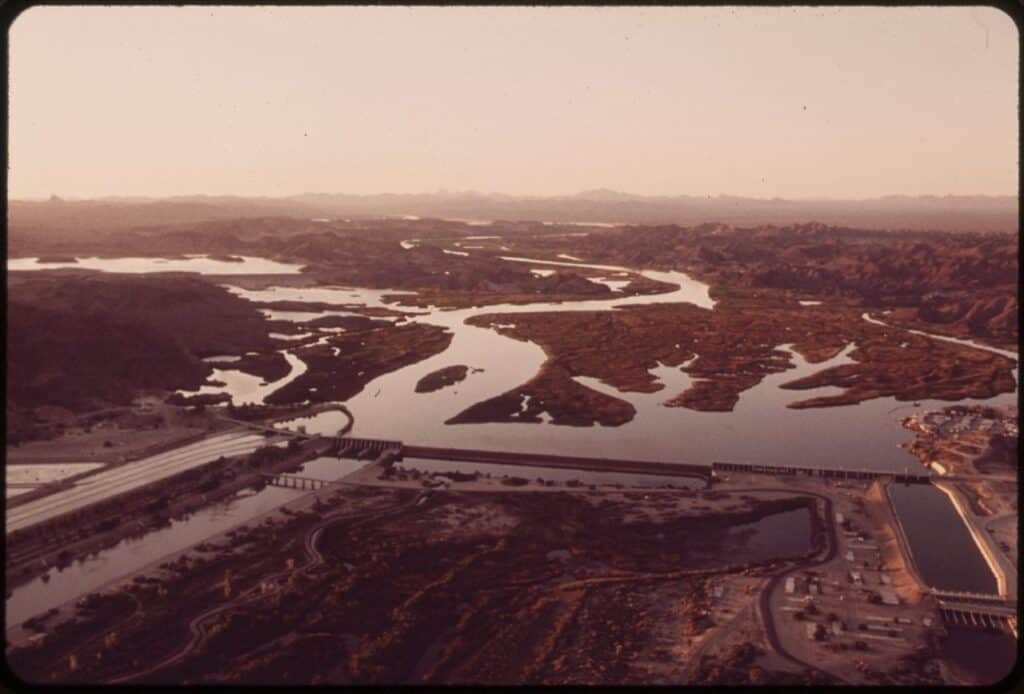
States rely on the Colorado River and the Imperial Reservoir for irrigation and more!
©Charles O’Rear, 1941-, Photographer (NARA record: 3403717) / This image (or other media) is a work of an Environmental Protection Agency employee, taken or made as part of that person’s official duties. As works of the U.S. federal government, all EPA images are in the public domain.
The Imperial Dam is much smaller than the Hoover Dam or Glen Canyon Dam, reaching heights of only 85 feet. However, this doesn’t mean it is any less useful in helping the southwest thrive!
The purpose of the Imperial Dam is to raise and direct the water of the Colorado River. Here, the dam diverts the water into the All-American Canal, the Gila River, and the Yuma Project aqueduct where it can be used for crop irrigation.
Construction of the Imperial Dam began in 1936 and was finished in 1938. Its construction led to the creation of the Imperial Reservoir.
The photo featured at the top of this post is © Wisanu Boonrawd/Shutterstock.com
Thank you for reading! Have some feedback for us? Contact the AZ Animals editorial team.






